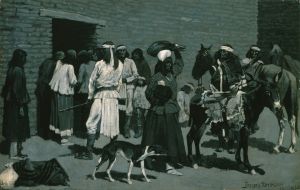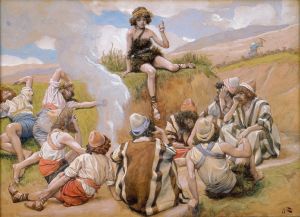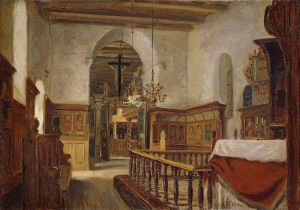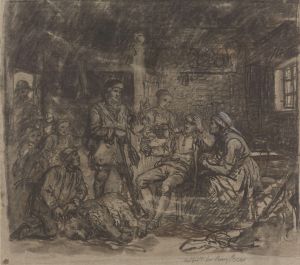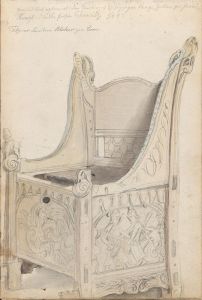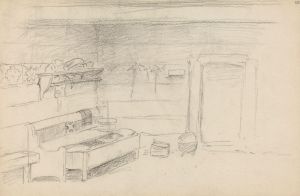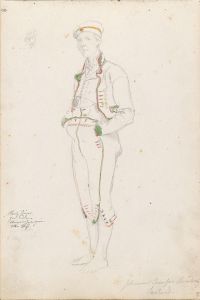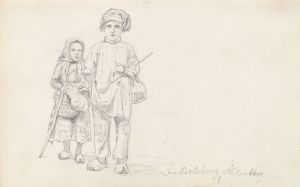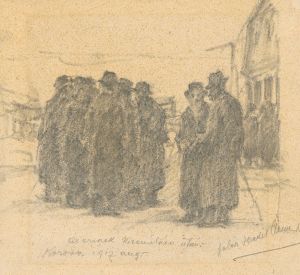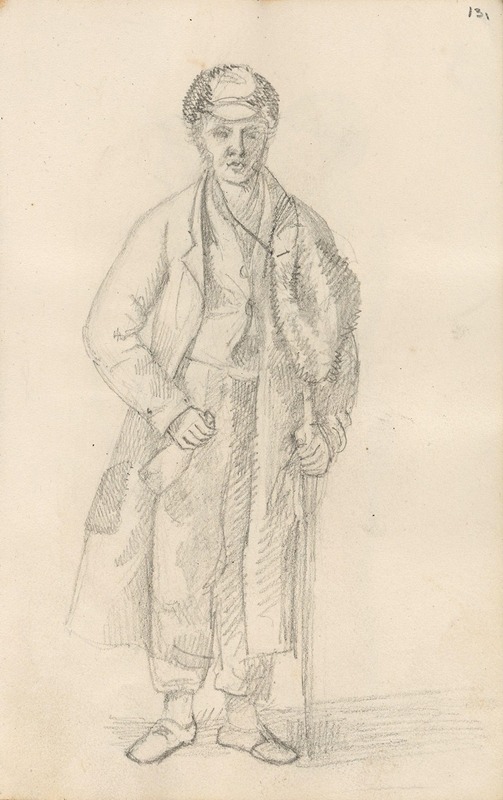
Landstryker
A hand-painted replica of Adolph Tidemand’s masterpiece Landstryker, meticulously crafted by professional artists to capture the true essence of the original. Each piece is created with museum-quality canvas and rare mineral pigments, carefully painted by experienced artists with delicate brushstrokes and rich, layered colors to perfectly recreate the texture of the original artwork. Unlike machine-printed reproductions, this hand-painted version brings the painting to life, infused with the artist’s emotions and skill in every stroke. Whether for personal collection or home decoration, it instantly elevates the artistic atmosphere of any space.
Adolph Tidemand was a prominent Norwegian painter in the 19th century, known for his detailed and culturally rich depictions of Norwegian life and traditions. One of his notable works is "Landstryker," which translates to "The Wanderer" in English. This painting is a significant example of Tidemand's focus on Norwegian rural life and his ability to capture the essence of the people and landscapes of his homeland.
"Landstryker" is part of Tidemand's broader oeuvre that often explored themes of Norwegian identity, folklore, and the everyday lives of common people. His works are characterized by a strong narrative quality, where each painting tells a story about the subjects it portrays. Tidemand's attention to detail and his commitment to authenticity are evident in his careful rendering of costumes, settings, and expressions, which provide a window into 19th-century Norwegian society.
The painting "Landstryker" depicts a solitary figure, a wanderer, who is likely a representation of the itinerant workers or travelers common in rural Norway during Tidemand's time. The figure is typically shown in a natural setting, which underscores the connection between the people and the rugged Norwegian landscape. This connection to nature is a recurring theme in Tidemand's work, reflecting the importance of the natural environment in shaping Norwegian culture and identity.
Tidemand's work, including "Landstryker," played a crucial role in the national romantic movement in Norway, which sought to define and celebrate Norwegian culture and history during a time of growing national consciousness. His paintings were not only appreciated for their artistic merit but also for their contribution to the cultural and historical narrative of Norway. By documenting traditional costumes, customs, and rural life, Tidemand helped preserve a visual record of a way of life that was rapidly changing due to industrialization and modernization.
Adolph Tidemand's influence extended beyond Norway, as his works were exhibited internationally and contributed to the broader European romantic movement. His ability to convey the spirit of Norwegian life resonated with audiences and earned him a place among the leading artists of his time. "Landstryker," like many of his other works, remains an important piece in understanding the cultural and historical context of 19th-century Norway.
Today, Tidemand's paintings, including "Landstryker," are held in high regard and can be found in various art museums and collections, where they continue to be studied and appreciated for their artistic and cultural significance. His legacy as a painter who captured the heart and soul of Norway endures, making his work an enduring part of Norway's artistic heritage.





